ALLIGATOR
BEHAVIOR page 4k: FEEDING page 11 page 1 2 3 4 5 6 7 8 9 10
This
page was born 1/10/2024. Rickubis designed it.
(such as it
is.) Last update:
Images
and contents on this page copyright ©2001-2024 Richard M.
Dashnau
Alligators
favor prey
items that will fit inside their head. That
is, if they can swallow it
whole, then they will normally attack it. Alligators sometimes
eat deer
in the park, but the
larger ones were probably found carcasses, but small fawns
might have been live captures. Alligators
have eaten large nutria (as I've shown on this website). But,
most
of
the time, they will
eat things like fish, frogs, crayfish, snakes....
Their strong jaws make alligators well-adapted for
eating turtles. Prey can be almost any size relative
to the size of the alligator. I've seen 10-foot
alligators going
after prey that was no larger than their largest teeth (very
small
frogs
and fish). During 20 years of volunteering
at
Brazos Bend State Park, I've gathered many photos and video
clips
documenting how alligators survive in a natural environment.
This is
the 10th page collecting
feeding behaviors.
On 12/24/2023
I went to BBSP. I almost didn't because of fore casted rain
and a
cold front. But, I decided to try to beat the front. When I
passed the
Observation
Tower and started East on the Spillway Trail, I noticed two
vultures--1
Black Vulture Coragyps
atratus and 1 Turkey Vulture Cathartes
aura--on
the ground near
the bridge (the bridge is about 290 yards from the
Tower). I thought I might find a carcass down there. The
vultures took off and landed in some trees South of the trail.
When
I
got near where I thought they'd been, I saw two large alligators.
One was in Pilant Slough near the bank, and another was lying
on
the vegetation about 50
yards away.
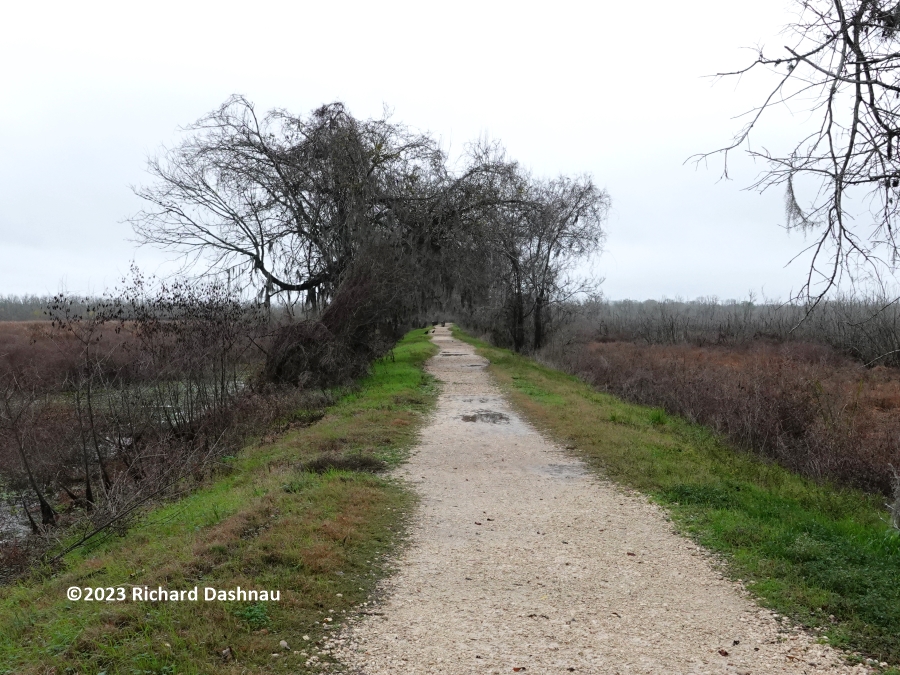
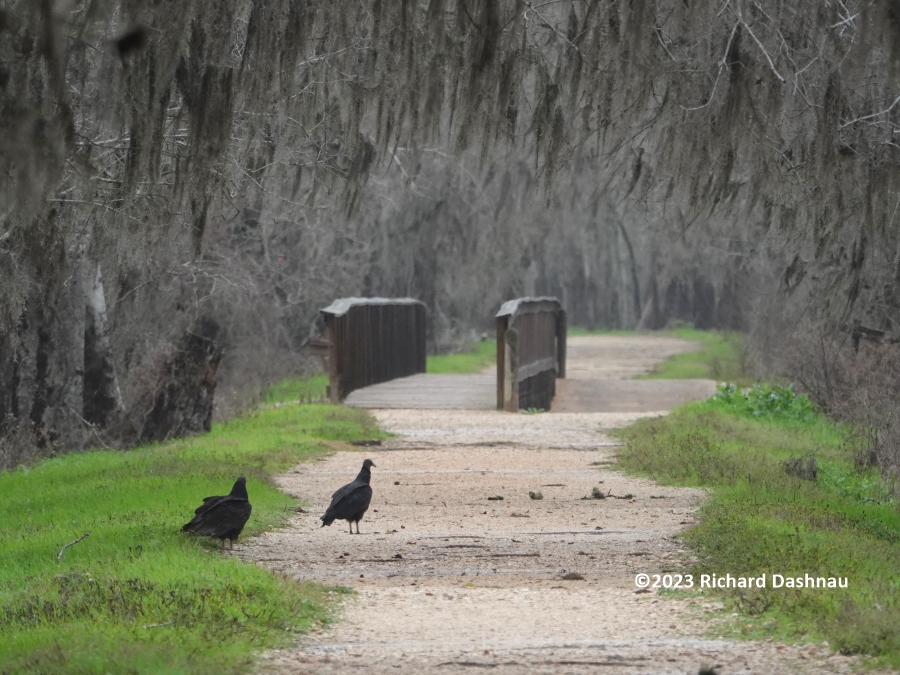
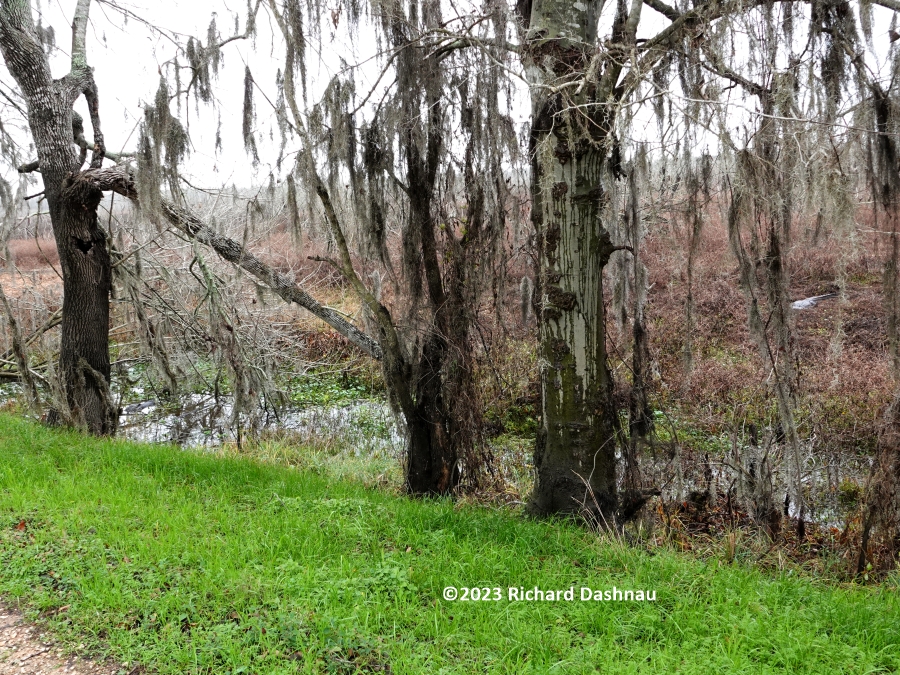
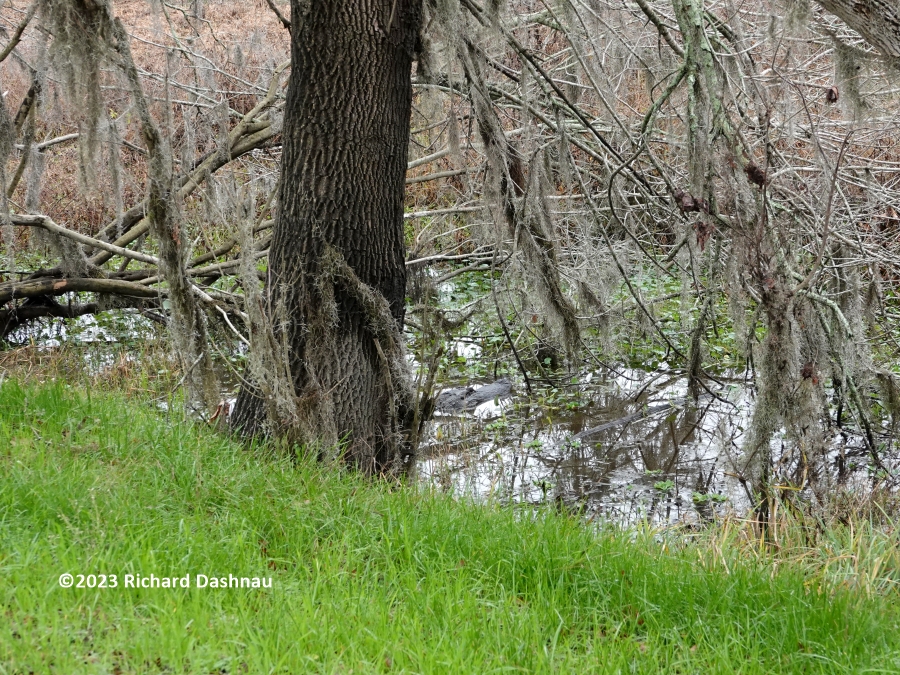
Both
alligators were magnificent! As I looked at them from a
different
angles, I noticed that the alligator lying on the vegetation had a
large mammal in its jaws. I waited
about 15 minutes to see
if it would manipulate or chew the carcass. When it didn't, I moved to
check on where the mother gator and pod had been.
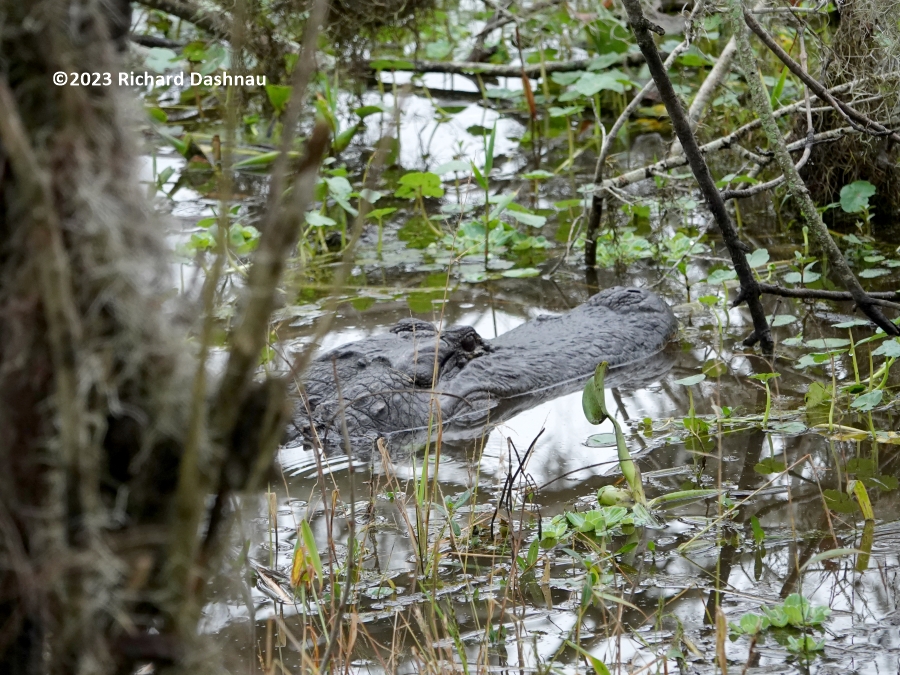
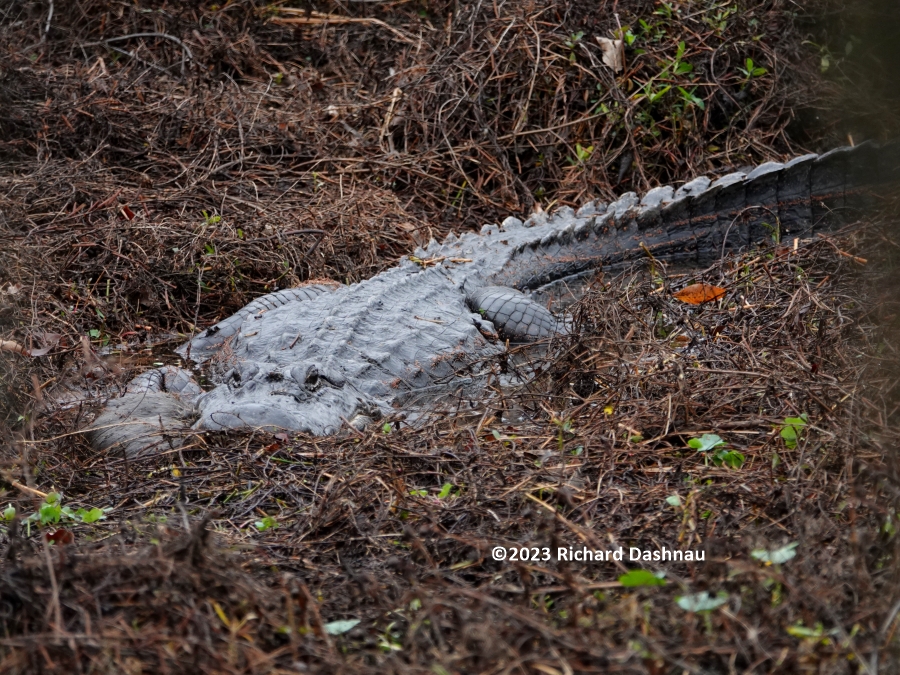
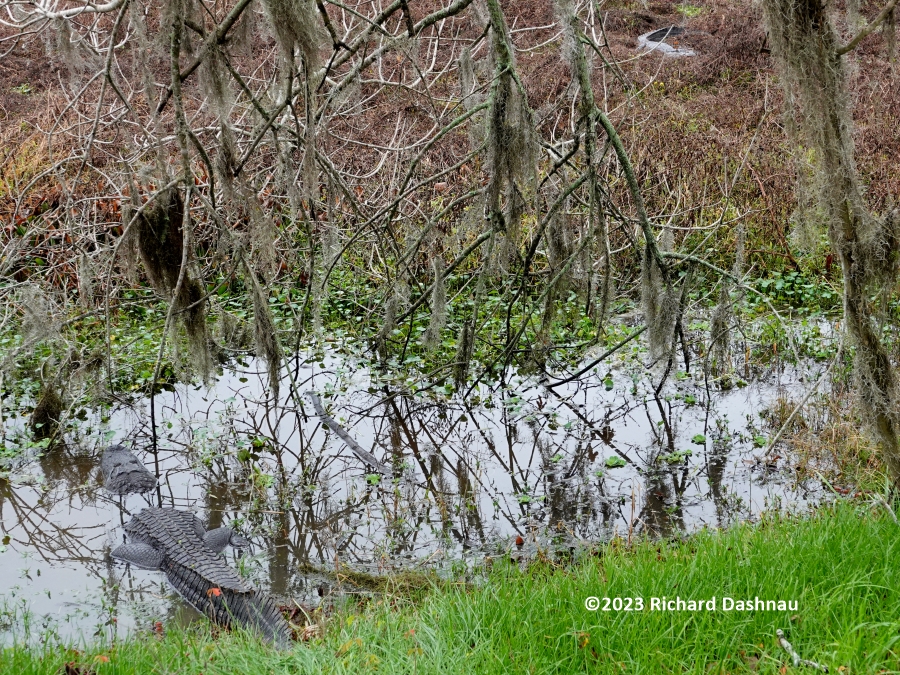
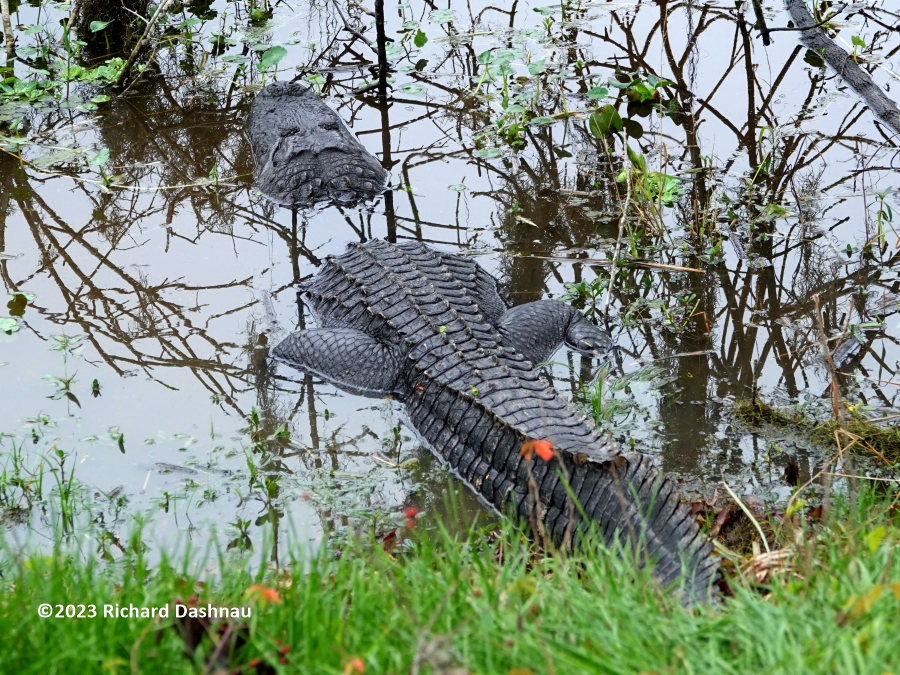
After
finding the mother, but no babies, I returned to the gator with
carcass. It had changed position, and the other gator had
moved
away from the bank and I couldn't
see it. I waited again for the alligator to chew on the
carcass. There was a good chance that
the gator on the bank had moved when the gator chewed the carcass
while
I
was gone--and was already moving towards the gator and carcass.
When
the gator started chewing and tossing the carcass (inertial
feeding...repositioning the prey), I could
not see a tail, or
head, but I got a clear look at a back foot. From the long
claws,
webbed toes, and coarse fur, I'm pretty sure that it was a Nutria (Myocastor coypus).
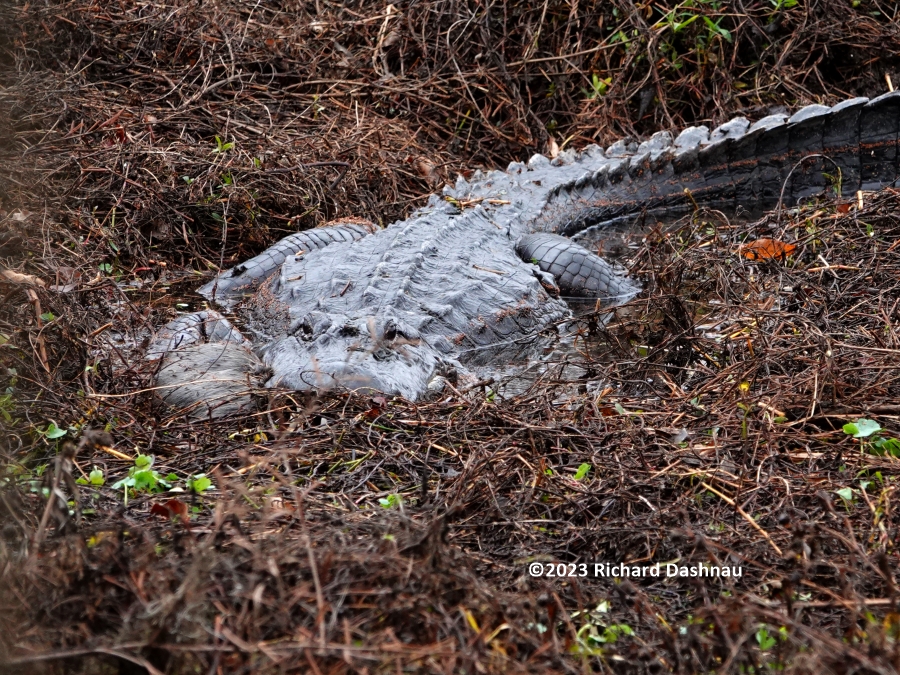
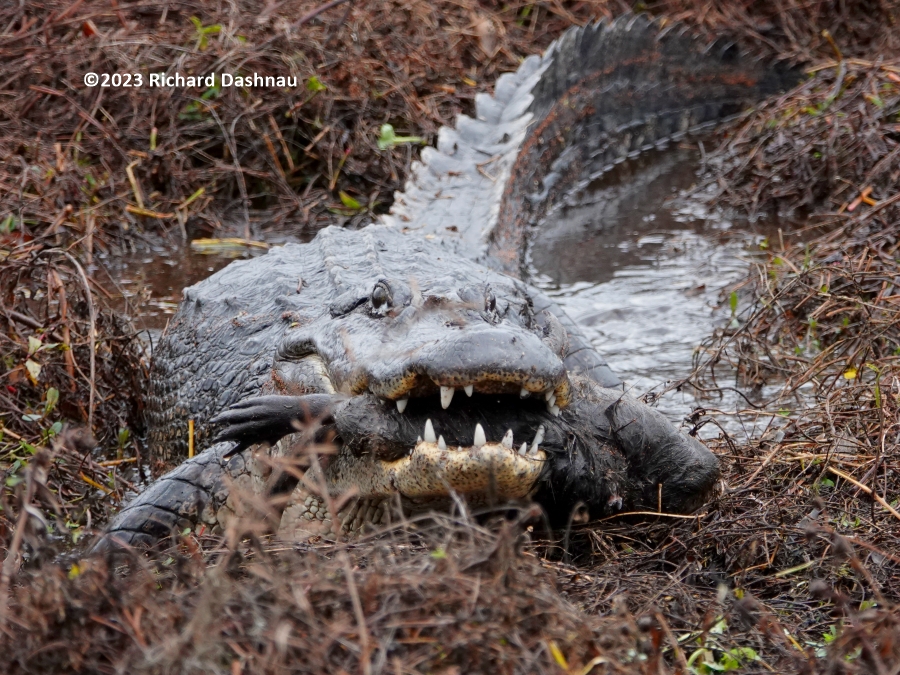
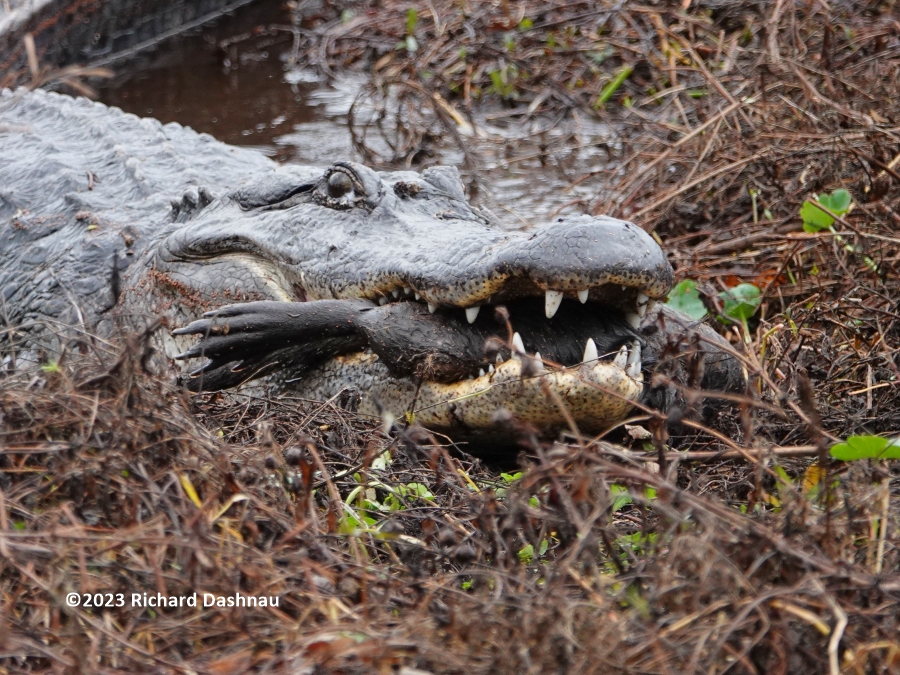
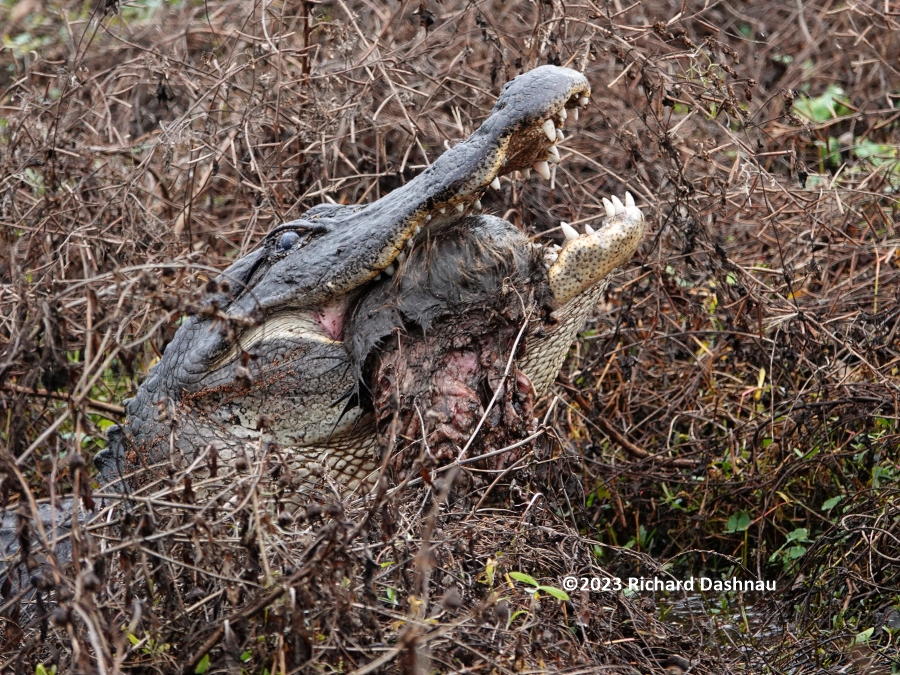
Usually,
I look for the tail and head, and use the prominent orange incisors
and round, bare tail to help identify a Nutria. But the tail
was
hidden, and half of the carcass
was already gone. The carcass
appeared pretty old, and although I couldn't smell anything from it;
the vultures might have. The alligator chewed on the carcass, paused
for
a few minutes, and chewed. It was moving quietly, and not too quickly.
But, it attracted the attention of another large alligator anyway (maybe the
one from the bank).
This happens often when an alligator is
handling large prey within visual or hearing range of any other
alligators. The others will try to take the prey; not "their
share" of
the prey. They want it ALL. I have some examples of this on some of my
other pages; like
this
one.
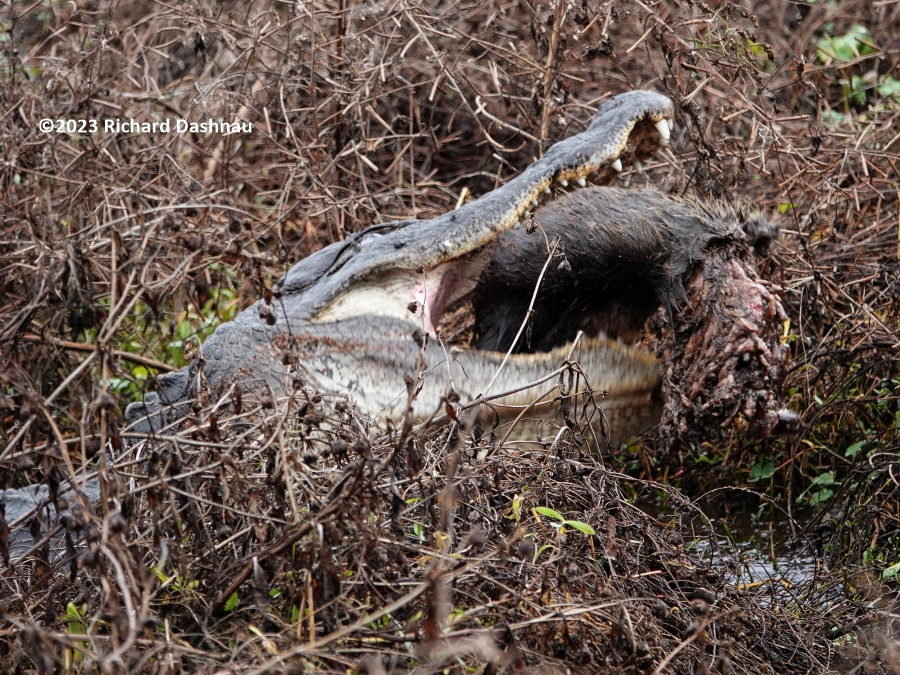
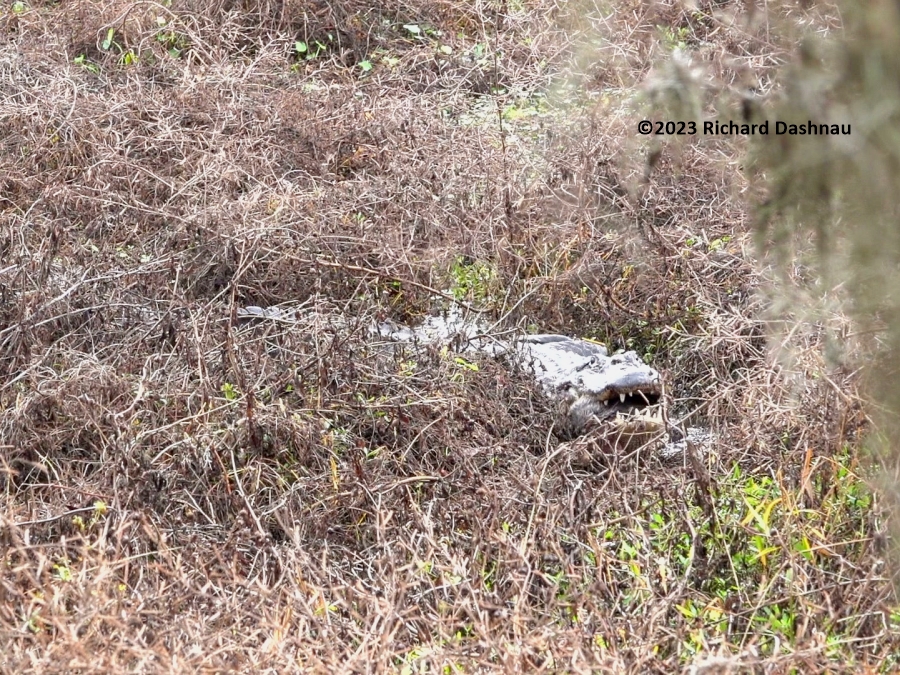
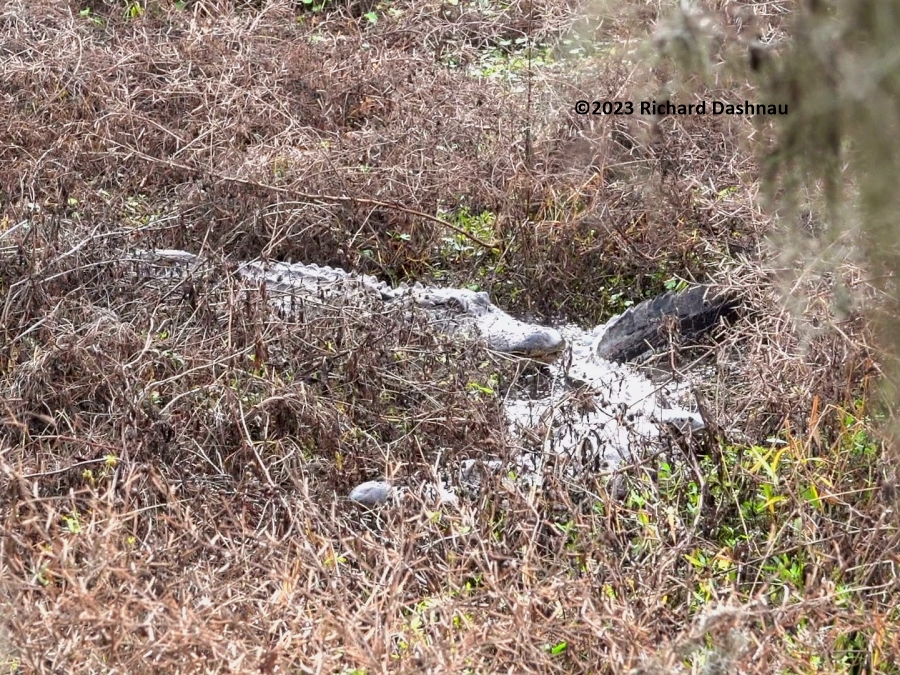
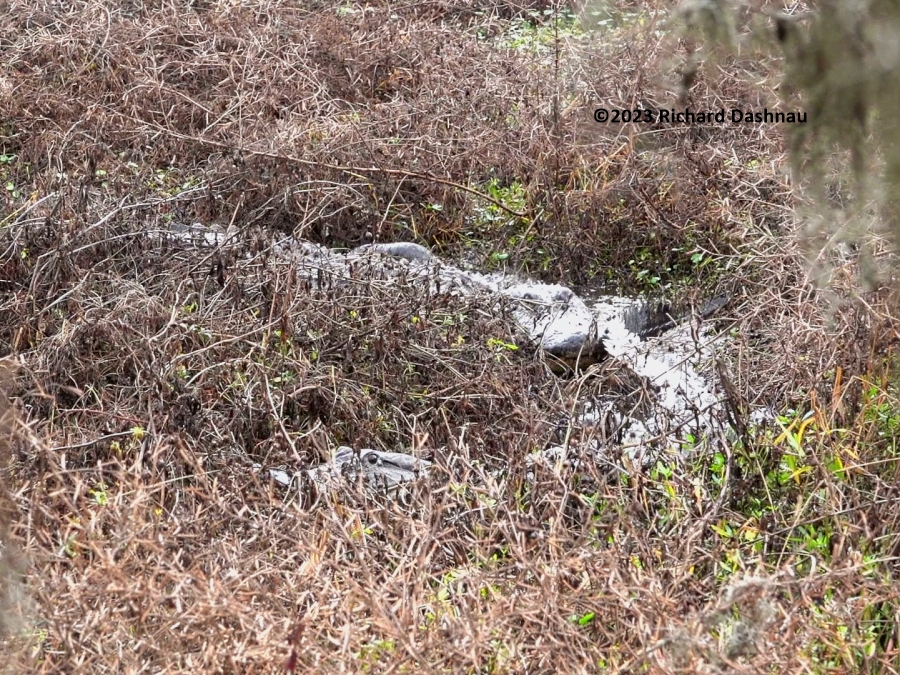
The
images showing the two gators moving through the vegetation are frames
from the video I shot, which you can see
at this link. After
brief contact, the gator with
the carcass moved under the floating
plants. The other gator followed, and I lost sight of them
both.
After a few minutes, the gator and carcass appeared near the
bank.
I moved back a little, expecting the gator to cross the trail with its
prize to avoid further disturbance of its meal.
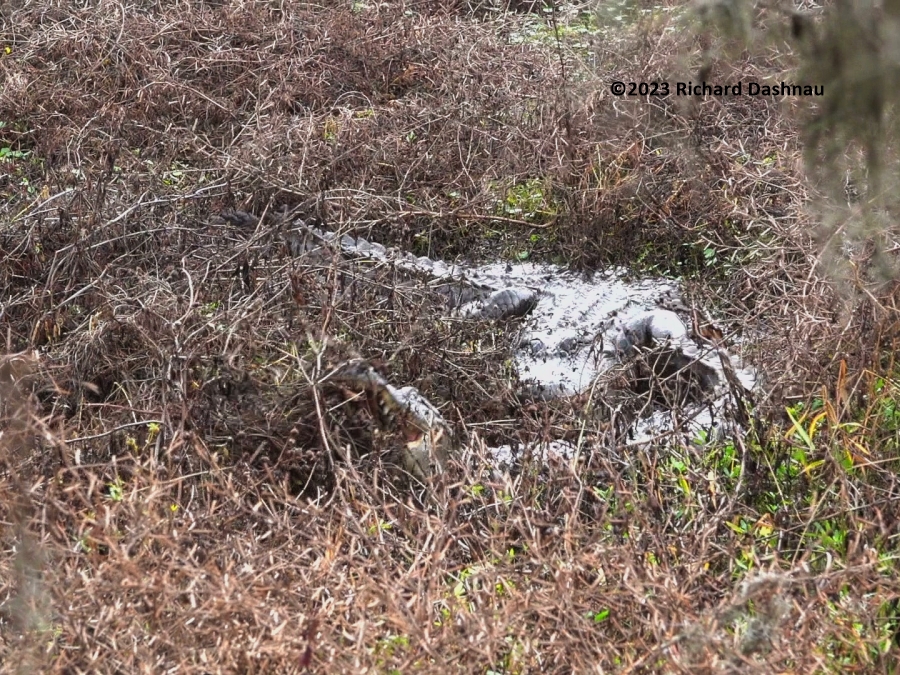
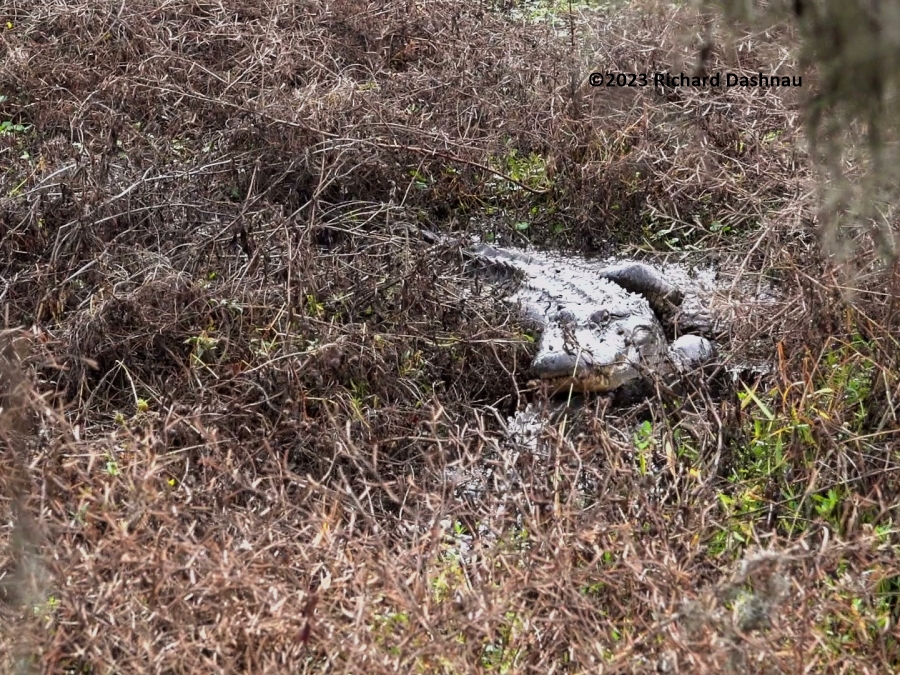
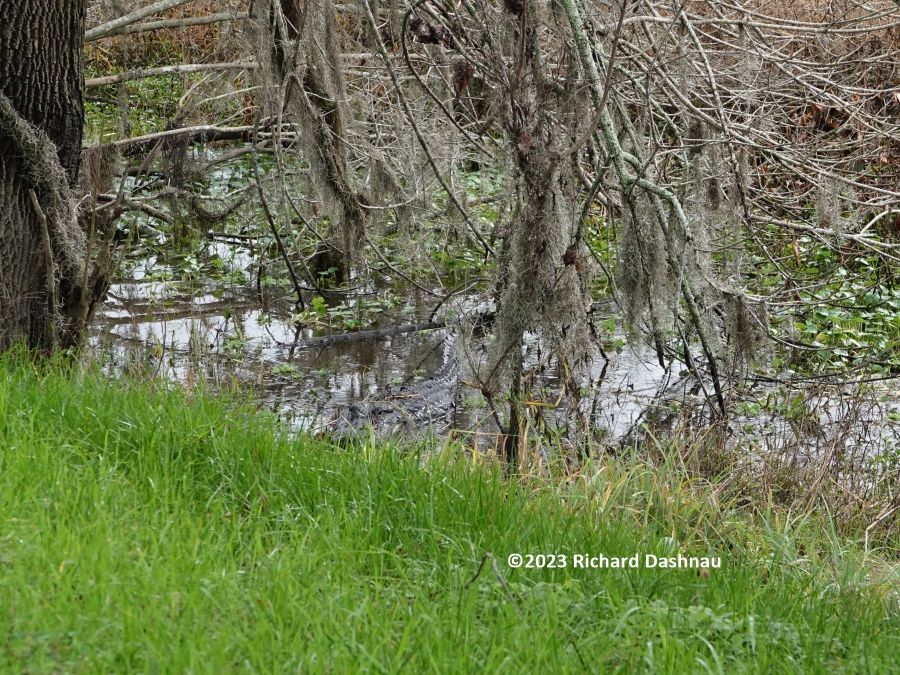
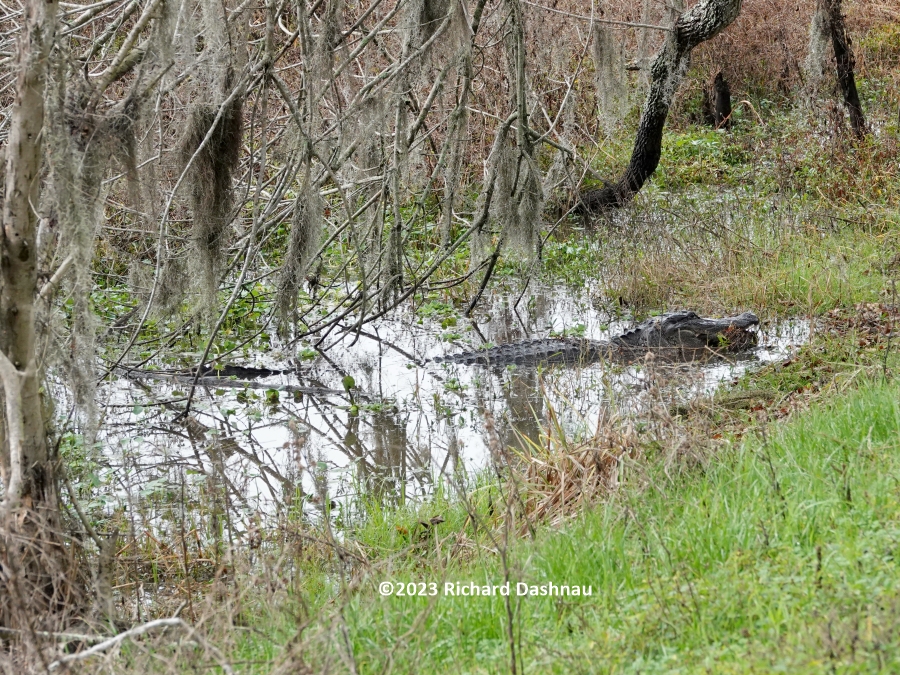
The
alligator crossed the trail!
Even though the other alligator didn't reappear (well, I couldn't see it)
this one carried the carcass across the trail without stopping,
although
it moved slowly.
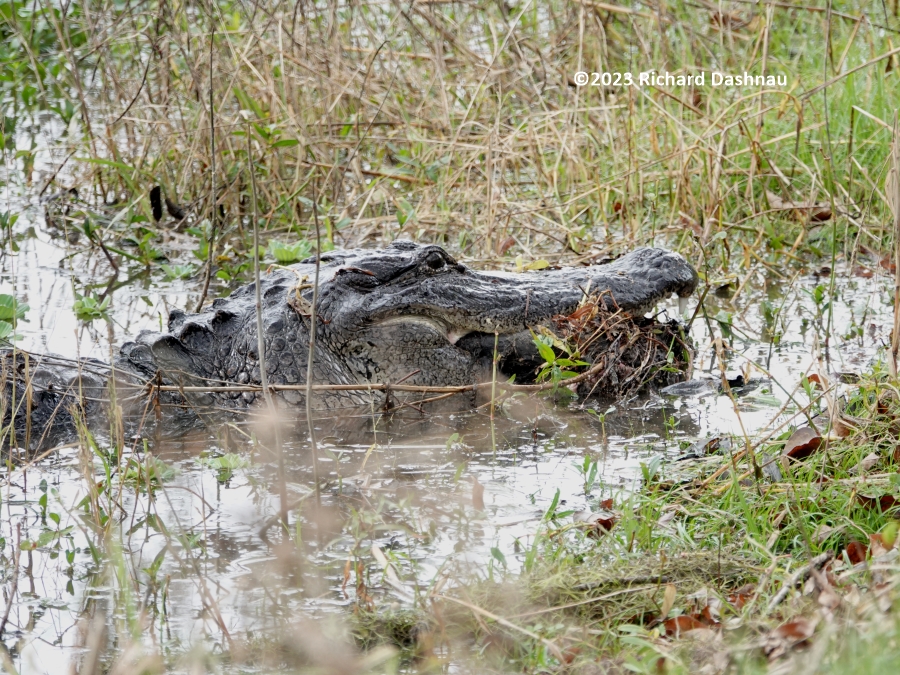
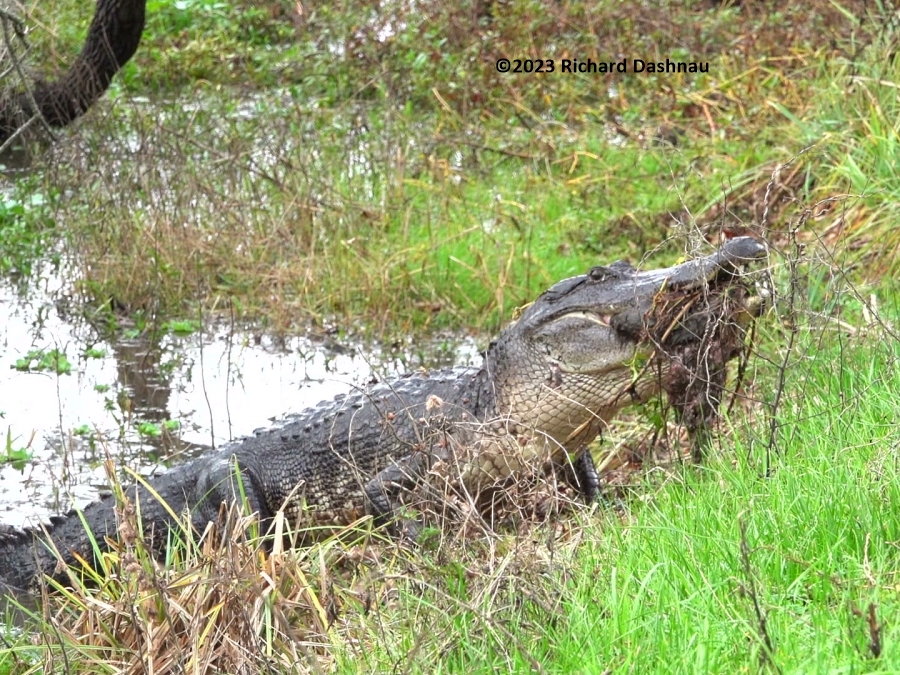
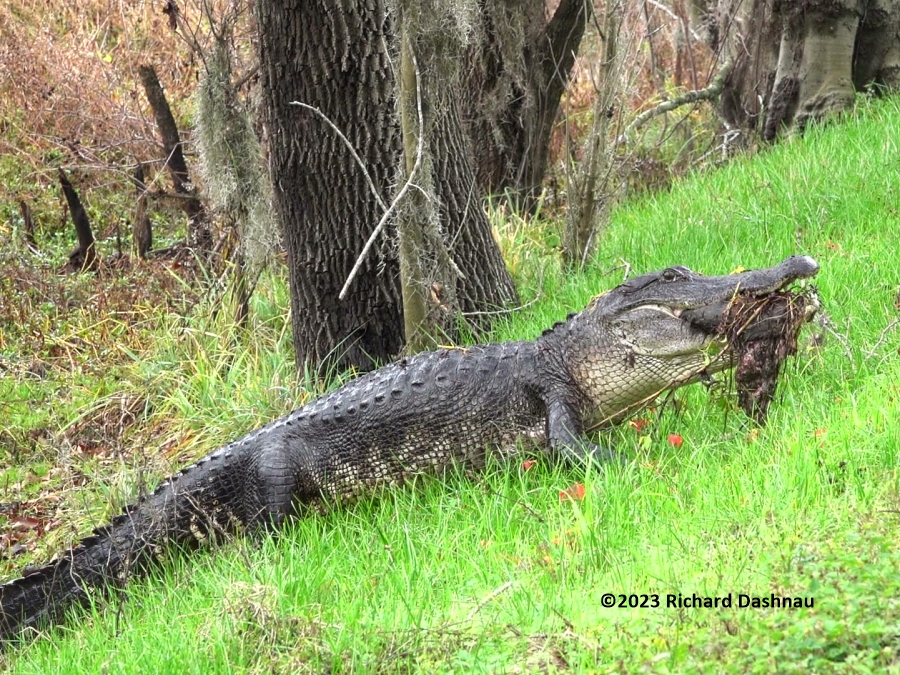
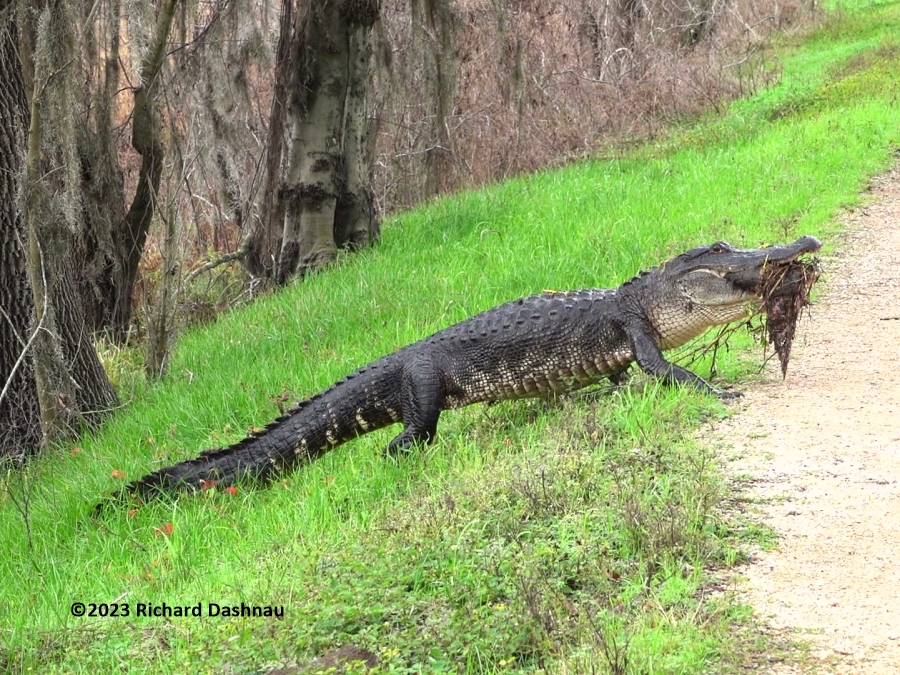
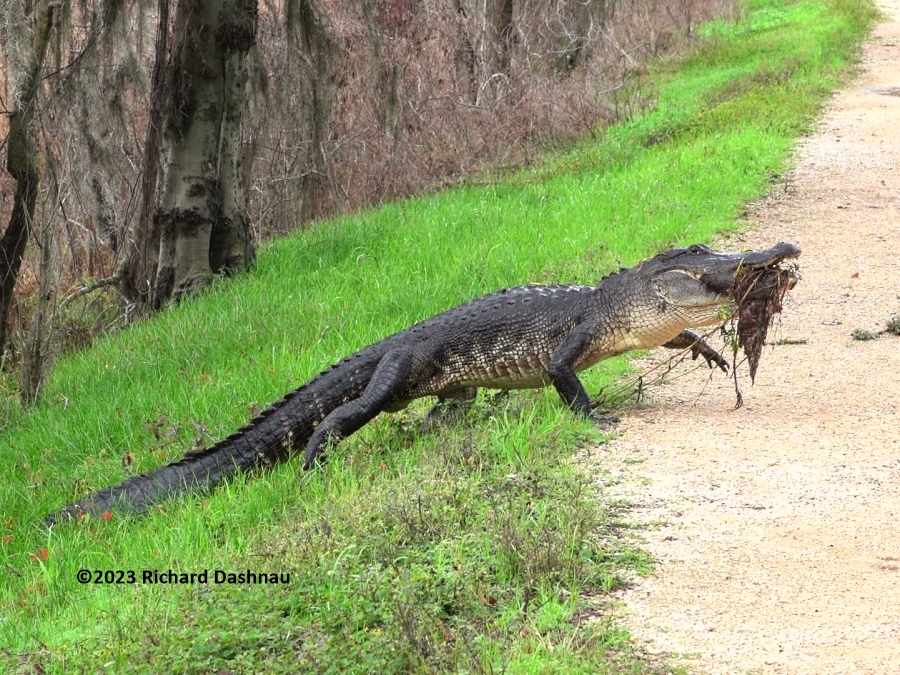
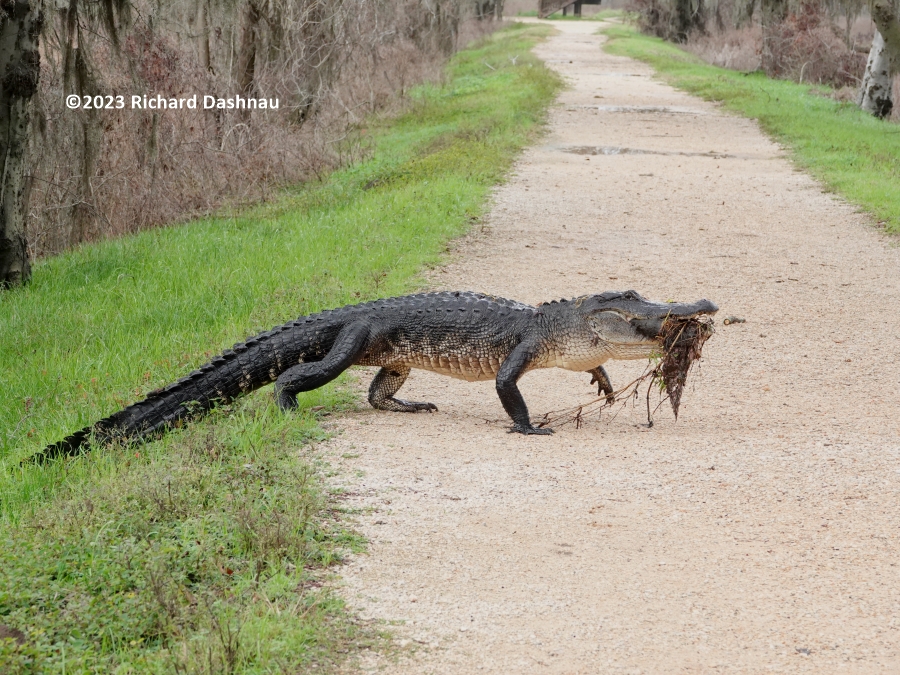
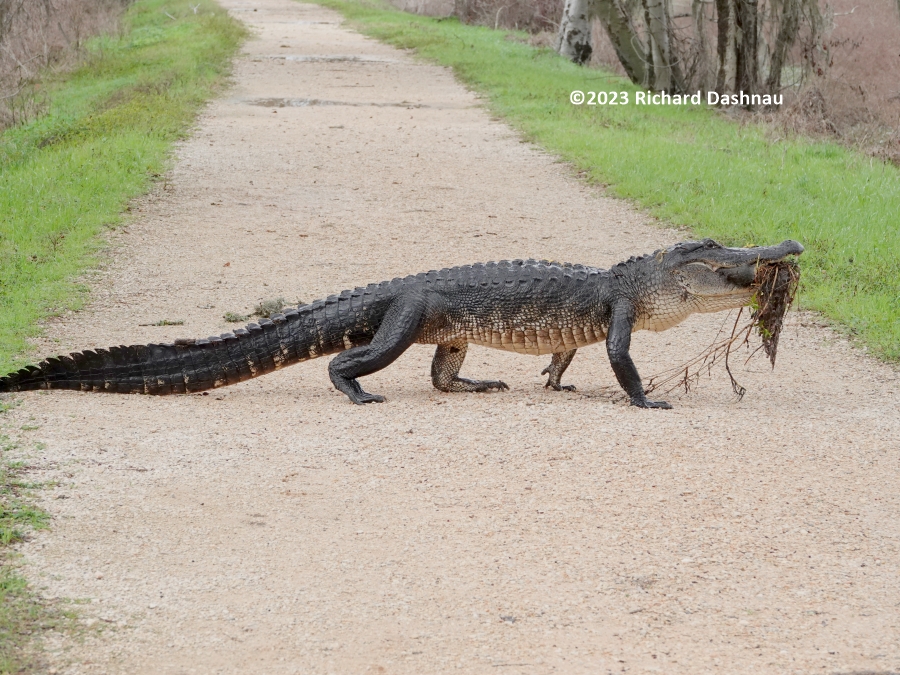
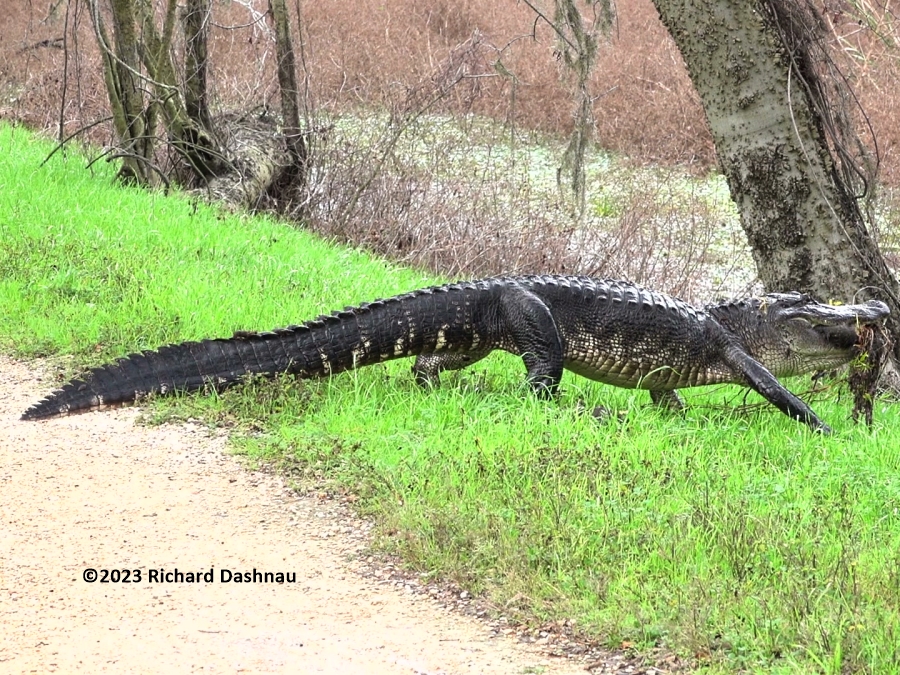
After
the alligator entered the water, I found its crossing point and used
my
6-foot stick to measure the trail. I scuffed the center of the trail
at
the end of the stick with my
foot, and slid the stick over to the
other side. The trail appeared to be at least 10 feet across.
Compare with the first image below left (122423_29) and we can
estimate
the
alligator was about 9 feet long. Not long after this, the
cold front hit the park, and drenched me with cold air and rain (I'd
made it back to the Observation Tower when it hit.)
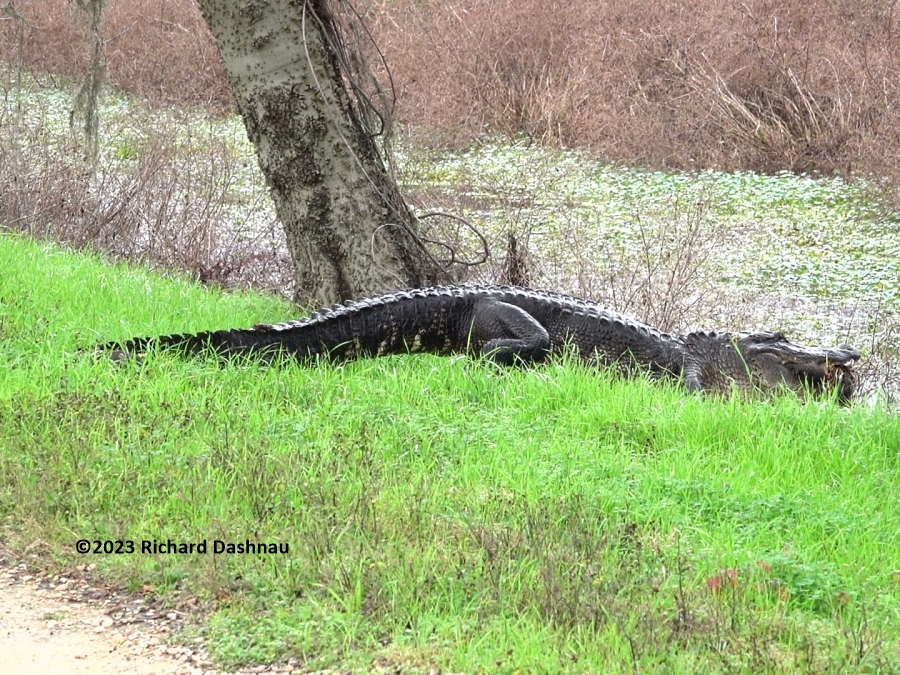
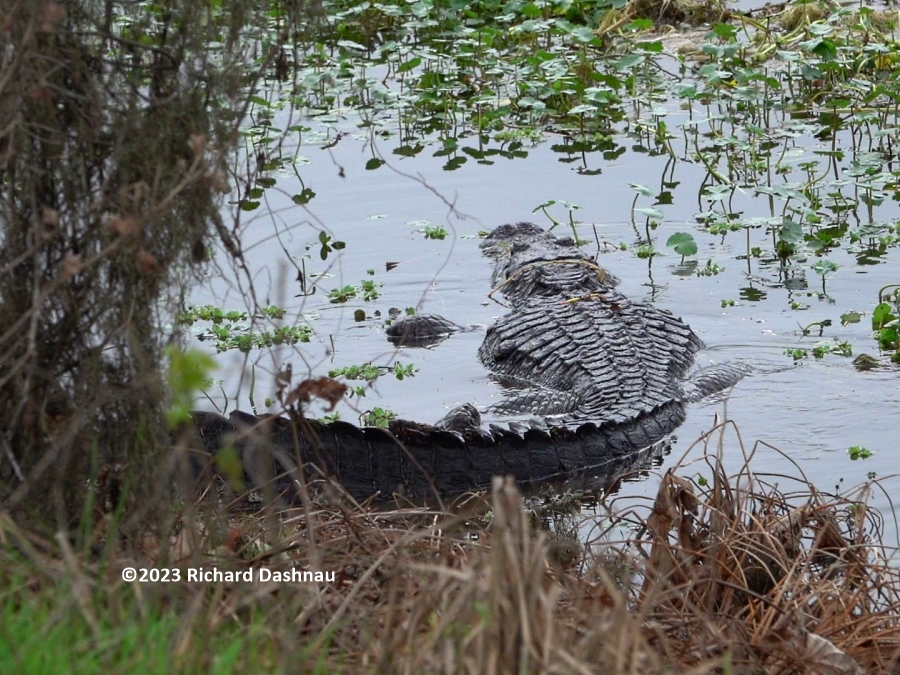
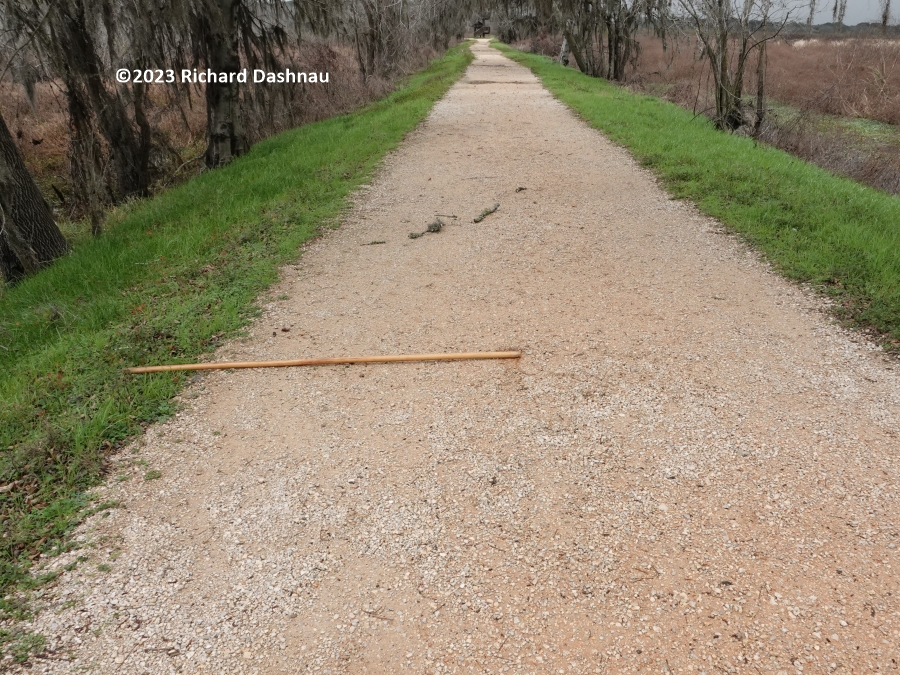
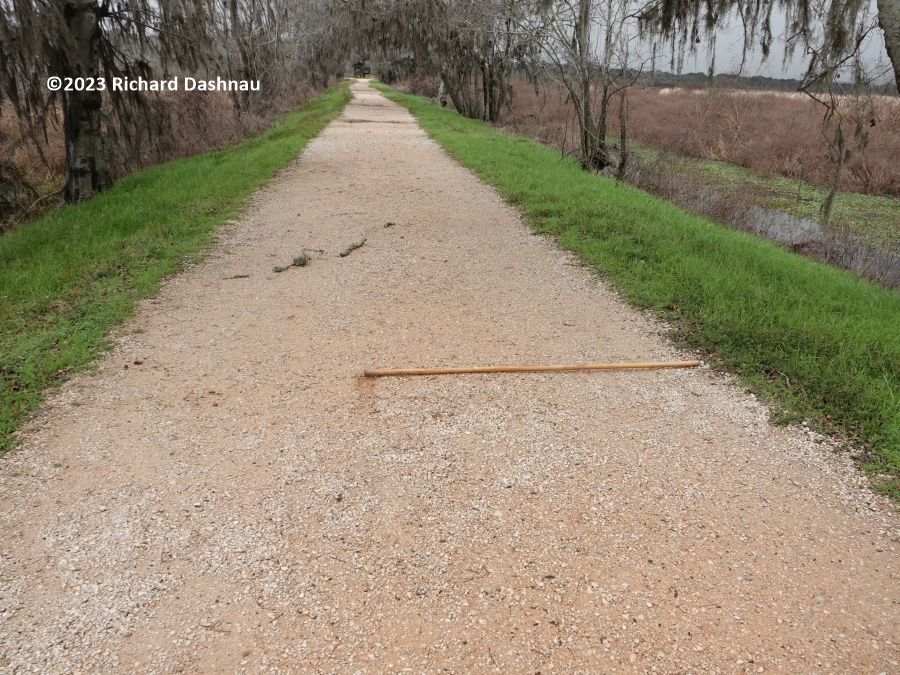
And,
this
page shows alligators at the park, on land, near various
landmarks at the park.
Go back to my main alligator page, Alligators
Go
back to my home page, Welcome
to rickubis.com
Go
to the main
alligator page































